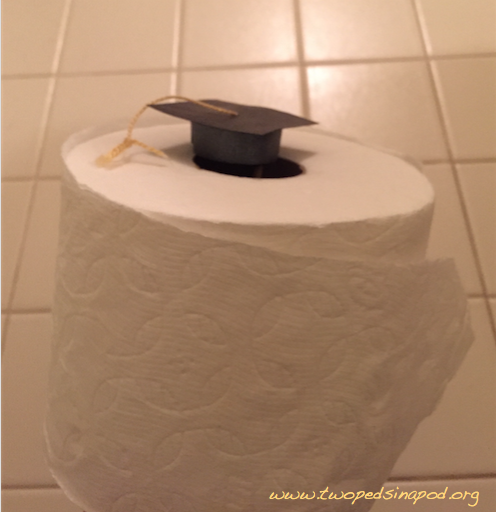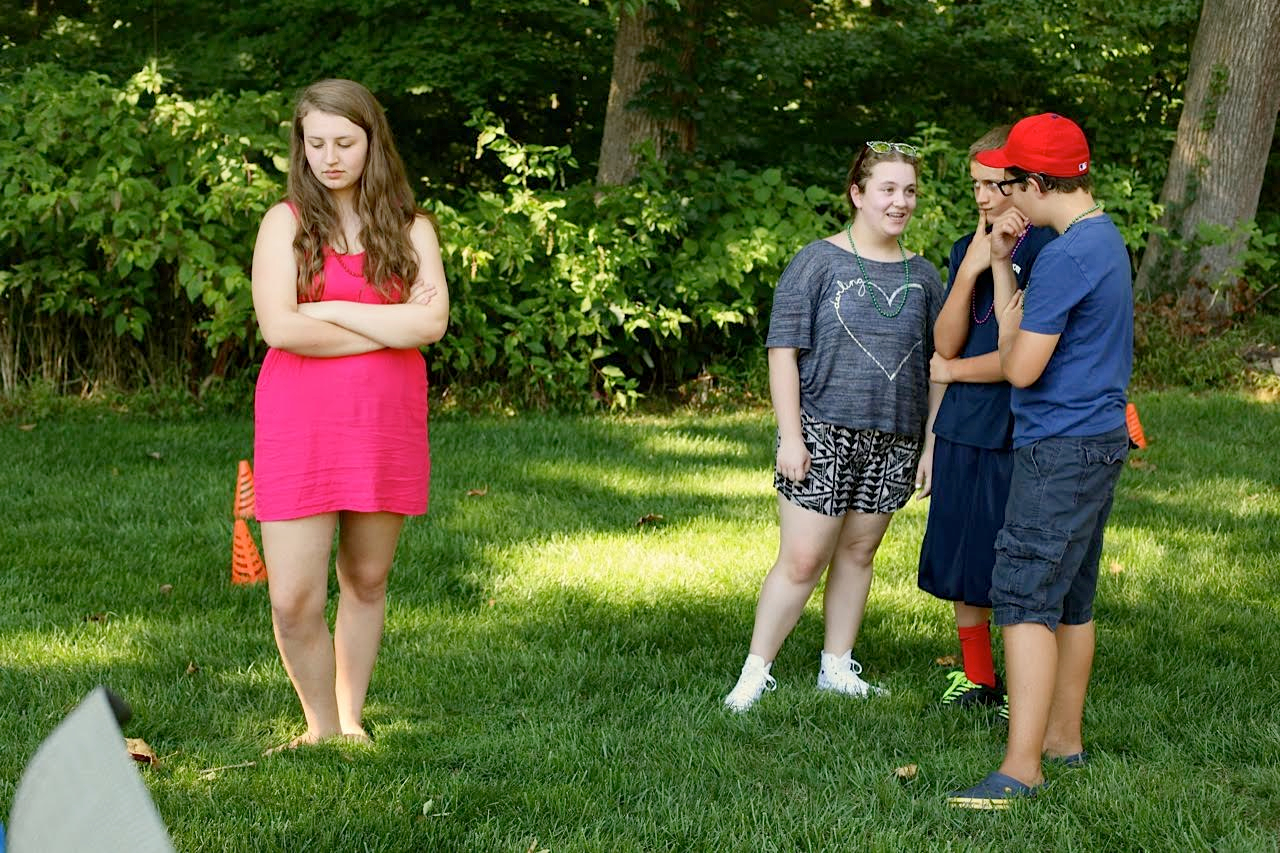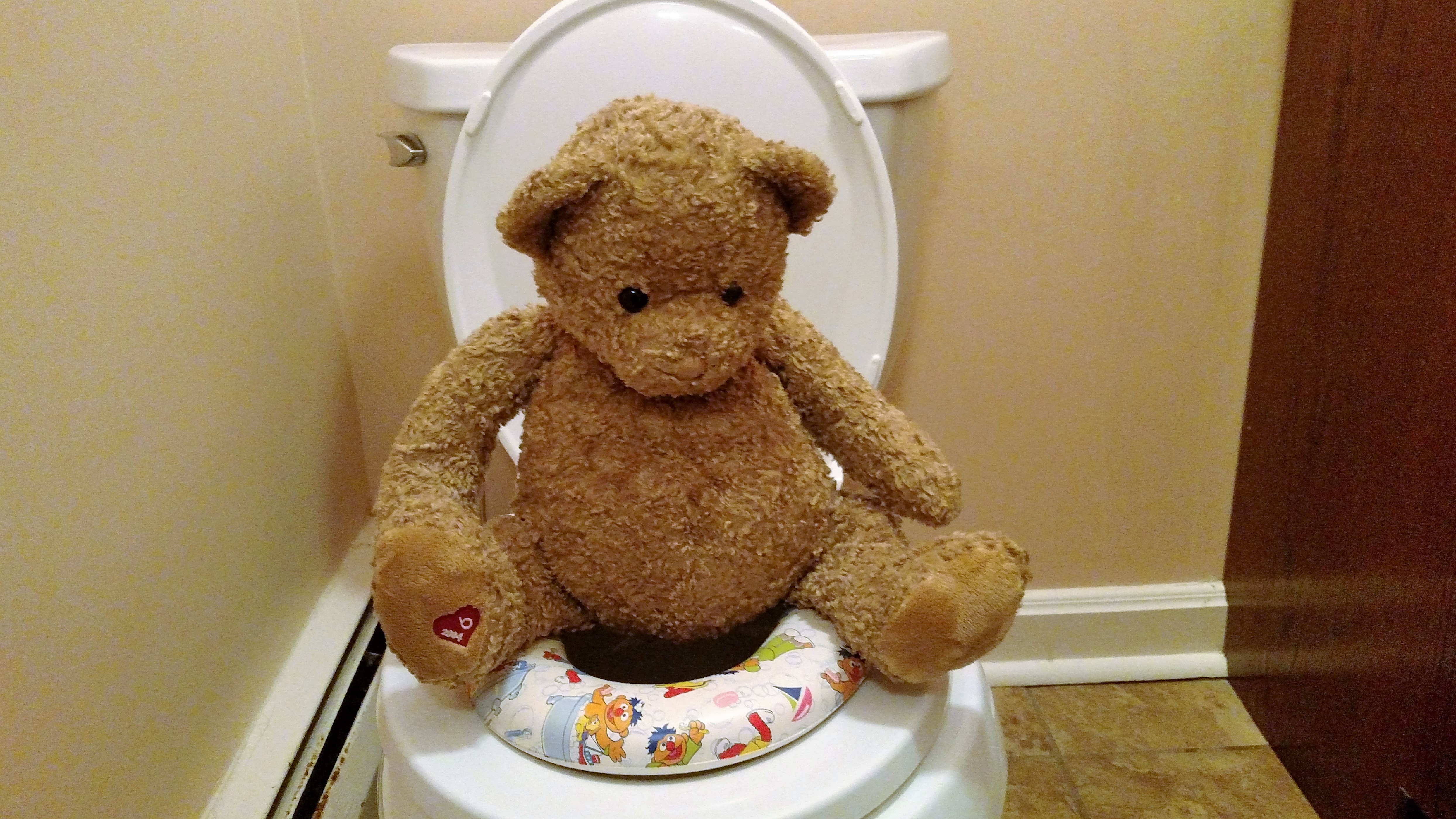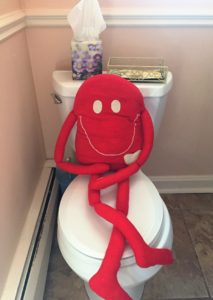
Just when you thought your child graduated from potty training …there’s more
Believe it or not, this post is for parents of kids who are already potty trained. Because sometimes even kids who are potty trained will refuse to use the toilet.
Changes and transitions, such as the start of a new school year, can trigger regression in kids who have been potty trained for years. Now that your children have been back to school for a few weeks take the quiz:
-Does your child come home from school and make a mad dash for the bathroom before he even gets his shoes off or asks you for a snack?
-Does your child stop eating and complain of belly pain after two bites of dinner?
-Does your child’s poop routinely clog your toilet?
-Is your child’s underwear sometimes damp?
-Have you noticed skid marks (small streaks or smears of poop) on your child’s underwear?
If you answer “yes” to ANY of these questions, then read on.
Advanced Potty Training
The main problem many kids encounter is that once school starts, they have a lot of new distractions and can’t be bothered to pee or poop. First, the morning routine might be more rushed. In school, the teacher is teaching. Your kid is interacting with other kids. The school’s bathroom is foreign, and may even have an auto-flush toilet: scary for the newly-trained. And unlike your newly potty-trained toddler who often finds it thrilling to try out every public restroom he sees, kids in school may feel more self-conscious, and not as adventurous, about visiting new bathrooms.
School bathrooms can be smelly, loud, and even places where kids bully each other. Some kids develop an aversion to using the school bathroom. These kids hold their pee and poop all day long until they get home, then run into the house and make a mad dash for the bathroom.
A child’s internal debate
For a kid who becomes overstimulated at school or who develops an aversion to the school bathroom, his bladder and brain have a conversation that goes like this:
Bladder: I am full.
Brain: Hold it, I don’t want to use the bathroom right now.
Bladder: But I REALLY have to pee.
Brain: Tough luck, Bladder, just wait till we get home.
Bladder: But I have no more room for pee!
Brain: Deal with it, Bladder!
So, the bladder has two choices:
1-Bladder overflows, at least enough to relieve a bit of pressure. This causes damp underwear. (For other reasons click here to review our post on damp underwear.)
OR
2-Bladder distends to accommodate more urine and confuses the nerves that supply sensation to the bladder. Kids lose the ability to tell if they have to urinate, which leads to full bladder-emptying accidents, and can lead to urinary tract infections.
A similar discussion can occur between your kid’s brain and his rectum:
Rectum: I am full of poop, Brain. Take us to the bathroom.
Brain: In school? Are you kidding? I am enjoying this game the class is playing/I am embarrassed to poop in school/I am afraid of the school bathroom. HOLD IT!
Rectum: OK, but you’re not going to like how this comes out in the end.
The rectum also has two choices: release just a bit of stool so it doesn’t feel so full and uncomfortable – these are skid marks. OR it will just hold onto the stool, making it larger and harder all the while, so it becomes painful and scary to pass and ultimately clogs the toilet.
This cycle leads to more problems – over time, the distended rectum develops decreased sensation (sound familiar?) and ultimately the child loses the ability to feel when he has to poop. Large poop masses in distended intestines can lead to pain while eating (the kid who eats two bites of dinner, then stops because of belly pain). Poop can leak out without your child knowing because he is unaware of the sensation of the chronically-ignored-full-rectum. In addition, a full rectum will also press on the bladder changing the way the brain is sensing whether or not to void.
How can we parents prevent these problems?
Remind your child to use the bathroom upon waking up in the morning and again before leaving the house for school. Even if he says he does not have to go, tell him to “Just check- sit for 2 minutes.”
Ask your child if he uses the bathroom in school. Preschool and early elementary school teachers often have scheduled bathroom breaks, but then it’s entirely up to your child to remember to use the bathroom. Encourage him to stop in the bathroom around lunch time in school.
Once home from school, remind your child to use the bathroom or “just check” if he hasn’t already done so.
If you leave the house again for an after-school activity, insist that he “just check” again to decrease your chances of having to use another “foreign” toilet.
Incorporate a potty check into your child’s bedtime routine, even if he went relatively recently. Ideally the healthy bladder empties four to six times a day and the healthy bowel easily passes a stool at least once a day or every other day.
Because boys usually stand to urinate, remind them to sit at least once or twice a day, even if they don’t feel the urge to poop. As a mom of three boys, trust me: they often surprise themselves.
Even middle school and high school kids can have these problems. Suggest to your older child who, for whatever reason, avoids school bathrooms, that she can stop by the school nurse’s office to use the bathroom. She could also get up in the middle of class, if needed, and use the bathroom when it is most likely to be empty of other students, unlike during change-of-class time.
School cafeteria food and snacks provided at sports or other after school activities are not always healthy and can contribute to making stools too hard, so make sure to provide healthy choices at home with plenty of fruits and vegetables. Teach your kids to avoid too many cookies and other high fat foods – these are constipating foods. Encourage water-drinking. Caffeine-containing drinks (ice tea, soda) cause excess urine production and thus more stress on the bladder that your child might already be forcing to “hold it” for too long.
As for the children who frequently run to the bathroom in the daytime, but only pee a tiny bit, beware of something called urinary frequency syndrome.
Final exam
1-Does your child use the bathroom regularly, without stress or pain?
2-Can your child “go with the flow” in school as well as home, without any toilet clogging?
3-At the end of the day, is your child’s underwear without urine or skid marks?
If you can answer YES to all of the above, then you and your child have passed advanced potty training!
Julie Kardos, MD and Naline Lai, MD
© 2016 Two Peds in a Pod®
 Babies are gooey. Spew tends to dribble out of every orifice and the ear is no exception.
Babies are gooey. Spew tends to dribble out of every orifice and the ear is no exception.




 When I was in first and second grade, I took “special gym.”
When I was in first and second grade, I took “special gym.”



 A shout out to Trinity Day School in Solebury, PA where we spoke with a group of parents yesterday about the pearls and pitfalls of potty training. Today we share some of what we discussed.
A shout out to Trinity Day School in Solebury, PA where we spoke with a group of parents yesterday about the pearls and pitfalls of potty training. Today we share some of what we discussed.
 We invite you to come out on Thursday, October 20, from 9:30 to 10:30am when we will lead a discussion for parents about a topic near and dear to all toddler parents’ hearts. Join us for Potty Training: Pearls and Pitfalls at
We invite you to come out on Thursday, October 20, from 9:30 to 10:30am when we will lead a discussion for parents about a topic near and dear to all toddler parents’ hearts. Join us for Potty Training: Pearls and Pitfalls at